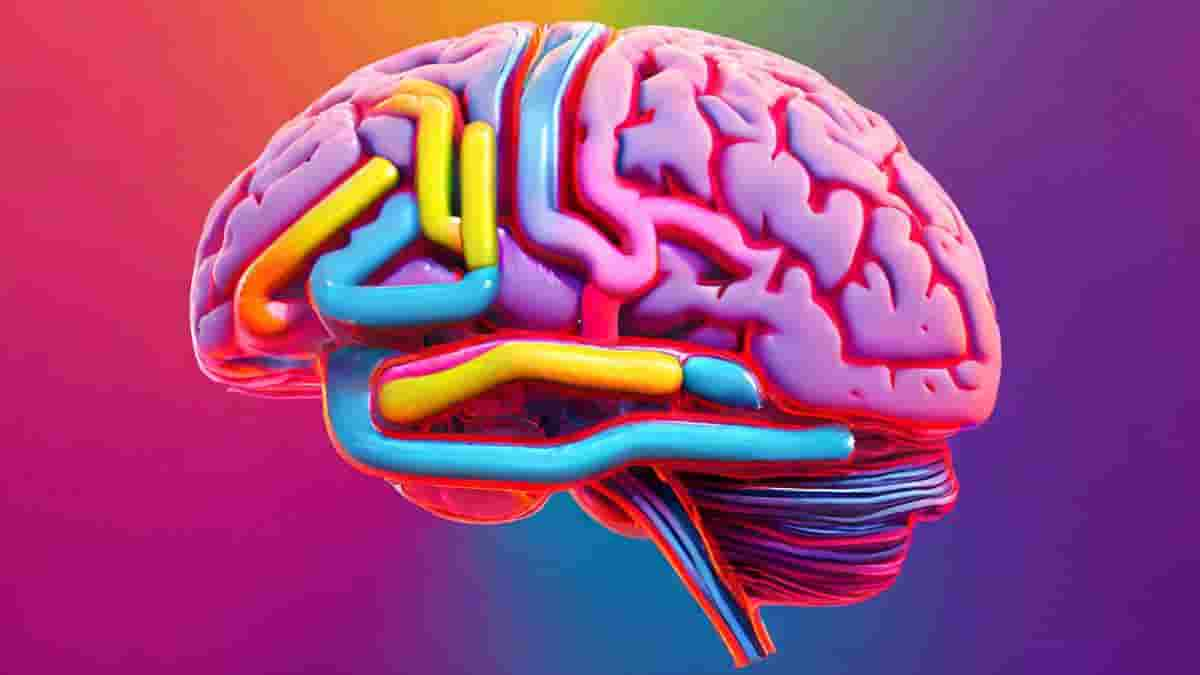The second ever known case of a patient developing synesthesia as a result of a brain injury has been reported by St Michael’s Hospital in Toronto.
Synesthesia is a condition in neurology where one sense, like hearing, is perceived at the same time by one or more additional senses, such as sight. The word comes from two Greek words, syn, meaning together, and aesthesis, meaning perception; literally, “joined perception.”
The patient, about nine months after having a stroke, noticed that words written in a certain shade of blue evoked feelings of strong disgust. Yellow was only slightly better. Raspberries, which he never used to eat very often, now tasted like blue, and blue tasted like raspberries.
High-pitched brass instruments, in fact the brass theme from James Bond movies, provoked feelings of ecstasy and light blue flashes in his peripheral vision, as well as causing large parts of his brain to light up on an MRI. Music played on the euphonium, a tenor brass instrument, shut down those sensations.
At first, frightened by the scrambled messages his brain was sending him and the conflicting senses he was experiencing, the patient was so worried that something was seriously wrong with him that he raised it with a nurse only as he was leaving an appointment at St. Michael’s Hospital in downtown Toronto. Physicians and researchers recognized at once that he had synesthesia,
Cross Perception of Music
Most synesthetes were born with the condition. Famous authors and artists with synesthesia, including composer Franz Liszt, author Vladimir Nabakov, painter Vasily Kandinsky and even singer-songwriter Billy Joel.
Dr. Tom Schweizer, director of the Neuroscience Research Program at St. Michael’s, examined the patient’s brain activity in a functional MRI and compared it to six men of similar age (45) and education (18 years) as each listened to the James Bond Theme and a euphonium solo.
“The areas of the brain that lit up when he heard the James Bond Theme are completely different from the areas we would expect to see light up when people listen to music,” Dr. Schweizer said. “Huge areas on both sides of the brain were activated that were not activated when he listened to other music or other auditory stimuli and were not activated in the control group.”
According to Dr. Schweizer, the fact that the patient had very targeted and specific responses to certain stimuli, and that the control group did not experience these responses suggests that his synesthesia was caused as his brain tried to repair itself after his stroke and got cross-wired.
The patient’s stroke occurred in the thalamus, the brain’s central relay station and the same part of the brain affected by the only other reported case of acquired synesthesia.
Reference:
- Tom A. Schweizer, Zeyu Li, Corinne E. Fischer, Michael P. Alexander, Stephen D. Smith, Simon J. Graham, and Luis Fornazarri. From the thalamus with love: A rare window into the locus of emotional synesthesia. Neurology July 30, 2013 81:509-510
Last Updated on December 15, 2023
